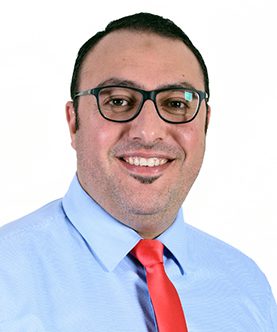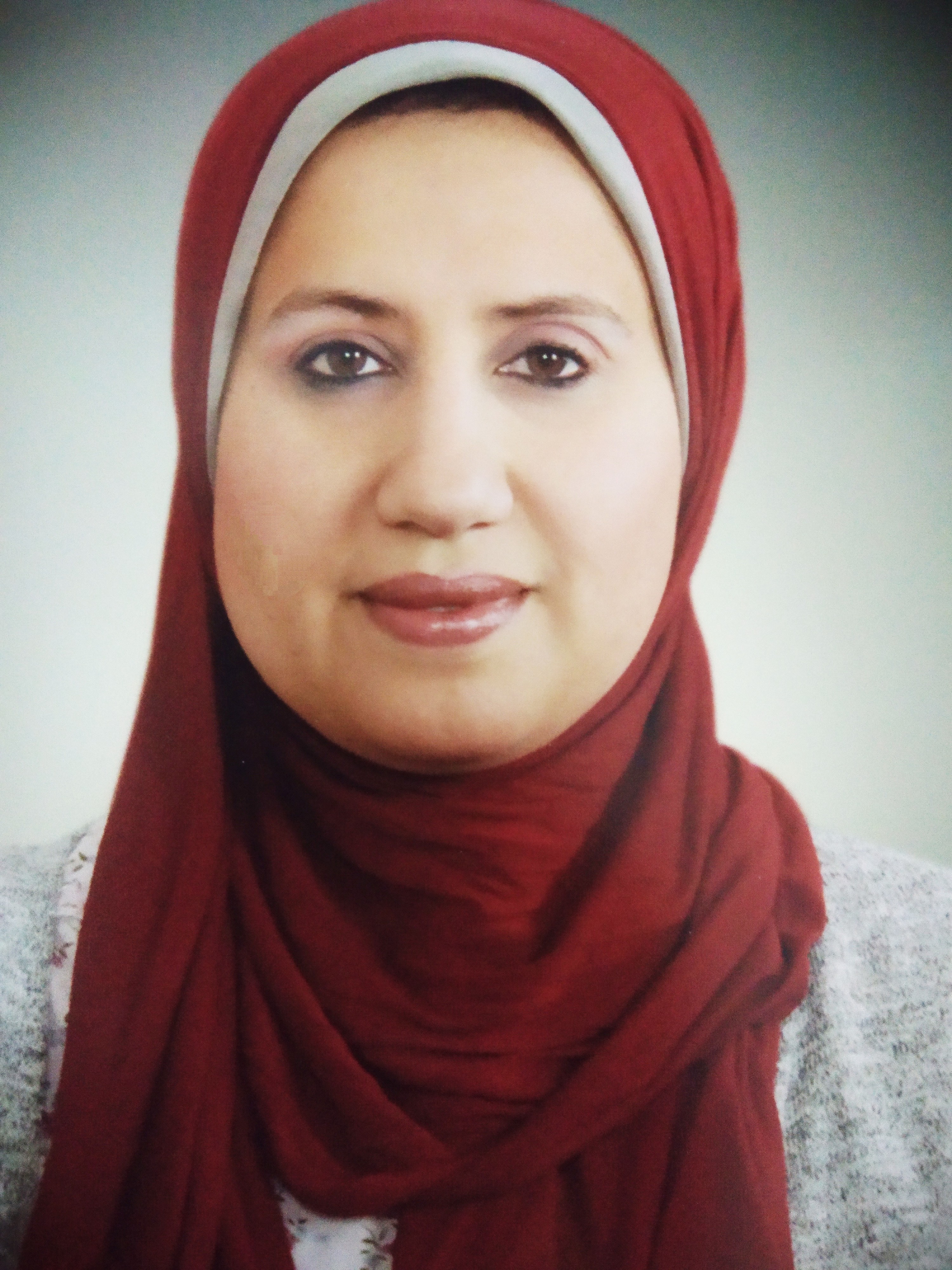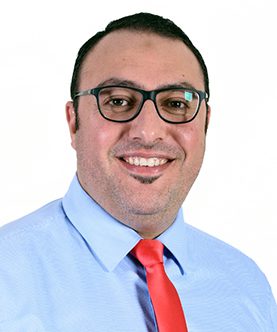Scientific Program
Keynote Session:
Title: Smart Electronic Health Applications (SEHA) Telehealth for Diabetes: Paradigm Shift in Diabetic Patient’s Self-management.
Biography:
Dr. Hamzeh Awad has completed his PhD at the age of 30 from the University of Munich, Germany and worked in Healthcare Operation and System, Planning and Development, Disability, Rehabilitation, Diabetes and eHealth in different countries such as Germany, Belgium, Jordan, Saudi Arabia, UK and UAE. Further; he was appointed as a Researcher at WHO center in Munich, Researcher at University Hospital of Technical University of Dresden, Assistant Prof. at King Saud University in Riyadh, and Research and Clinical programs Development Manager at Prince Sultan Rehabilitation City, KSA. Dr. Awad, was appointed as “Associate Professor” in Health Science Department at Al Khawarizmi International College (KIC) in Abu Dhabi and Adjunct Faculty member in Public Health Department, Abu Dhabi University, UAE and Senior eHealth consultant at e-Point, Belgium (Founder of SEHA eHealth). Recently, Dr. Awad, started his new role in academia at Higher College of Technology (HCT) teaching Health Information Management (HIM). He has several publications in ISI journals and chapters in Books and keynote speaker in several international conferences. He has several international collaborations with different research groups in Healthcare system, Physical therapy and Rehabilitation, Diabetes, Health Information Technology, Health Management and eHealth.
Abstract:
The translation of knowledge to practice lags in the health professions. We describe the eHealth promotion knowledge-to-action practice concept on how Diabetes Mellitus (DM) prevention can be readily incorporated into TeleHealth practice. In addition to means of targeting patients and encouraging them to participate in health behavior change, attention is given to the role of TeleHealth components of DM prevention and management. TeleHealth services with proven track records today can be broadly categorized into 3 groups: Teleconsultation, Telemonitoring, and Electronic Health Record. Teleconsultation allows patients to consult doctors about non-emergency medical conditions such as video call over an online link without having to step out of their house. Telemonitoring, on the other hand, helps healthcare professionals keep a close eye on patients dealing with chronic medical conditions such as vital signs of blood pressure and glucose levels fig1& fig2. In the back, electronic health record keeping ties the whole system together with no more paper work. It allows healthcare professionals to see a patient’s entire medical history, helping them make more accurate and timely diagnoses and treatment of their conditions.
Researched, close management of diabetic patients through monitoring showed significant reduction in glycemic level. Yet, the magnitude of its effects remains debatable, especially with the variation in patients’ characteristics (e.g. background, ability for self-management, medical condition, education). In Middle East, increasing awareness about telemonitroing and investigation of telemonitoring efficacy and cost-effectiveness is needed to prevent and manage DM by monitoring lifestyle parameters and control glycemic level as the main cause of DM complications.
Title: Give Your Pancreas a Break and Reverse the Effects of Type 2 Diabetes Through Holistic Lifestyle Changes
Biography:
Coach, Speaker, and Author of The Virgin Diabetic. Diagnosed with type 1.5 diabetes, prescribed medication along with basal and bolus insulin, Denise A. Pancyrz was told her health would deteriorate with age while her drug dosages would increase. Denise stepped away from the typical diabetes management protocol. Holistic lifestyle changes freed Denise from all medication and insulin. She gained her expertise through personal experience and her training in holistic nutrition and homeopathy. As a Six Sigma Greenbelt and a decade in the laboratory industry, Denise created a coaching program to assist diabetes patients in gaining control of their lives, not focusing on the disease or weight loss. Denise teaches patients to get to the root of the problem and how to stay the course by avoiding the diet merrygo- round. Success is driven by focusing on resting the pancreas versus food elimination.
Abstract:
Statement of the Problem: Despite the number of Americans prescribed diabetes medication and insulin, type 2 diabetes diagnoses increase annually at an alarming rate. Conventional treatment focuses on medication, dieting and managing this chronic disease. Medication has become the way to mask symptoms, not focus on the root cause for type 2 diabetes. Dieting focuses on caloric intake, carbohydrate counting, and food restriction. Teaching to manage diabetes negatively impacts the patient’s psychological ability to improve his or her health. Medication and insulin become a crutch. The outcome of this line of care appears to generate short-term results with lifetime need for medication and a progression to insulin. Findings: Shifting the focus to rest the pancreas through holistic lifestyle changes teaches long-term success for improvement. Striving for holistic view of the person focuses on many facets of a person’s life versus a narrow focus on the disease. This has far greater effect in putting the patient in control of one’s health. A patient that feels in control can improve their attitude, therefore, creating excitement when feeling and seeing the benefit of his or her lifestyle changes. Weight loss, the avoidance, reduction or elimination of medication or insulin, and improved A1c, is a result of holistic changes, rather than focusing on a number on a lab test. Data used is from my personal accomplishments and client cases. Conclusion & Significance: Physicians, due to time constraints, are unable to provide the highest level of insight and direction to a struggling patient. Struggling diabetes patients are seeking to reduce and eliminate medication and long-term success. Consistent support and education are key to identify areas that sabotage a patient’s efforts in making lifestyle changes to learn to rest the pancreas which in turn helps to reverse the effects of type 2 diabetes.
Title: Glucose Toxicity: The Worldwide Problem and the All-Natural Solution
Biography:
He was the founder of Dexcom, the leader in continuous glucose monitoring for people with diabetes and he has spent most of his career developing and commercializing products that empower people with diabetes to live longer, healthier lives. They came up with their patent pending formulation and launched their first product, Lysulin™, in January 2018. Lysulin is a nutritional supplement, available OTC, for people with Type 2 diabetes, prediabetes and metabolic syndrome that contains three active ingredient that have all been shown to lower blood glucose levels, as well as glycated proteins, like HbA1c. They share the belief that glycated proteins are the underlying cause of diabetes complications. Lysulin also improves the lipid profile by lowering cholesterol, LDL and triglycerides and raising HDL. Lysulin holds the promise to slow or halt the progression of diabetes disease complications. Double blind, placebo controlled clinical studies are currently underway to prove that Lysulin improves glycemic control.
Abstract:
Glucose is an essential ingredient in our diet and we all need it to produce the energy for everyday living. And while glucose is essential, too much glucose over too long of a time is toxic to our bodies. Glucose toxicity leads to the development of Type 2 diabetes in both children and adults, demanding that our healthcare systems spend a huge amount on treating diabetes and its complications.Chronic hyperglycemia leads to insulin resistance. Insulin is the hormone needed for glucose to enter our cells to produce energy. Needing to make insulin in an attempt to lower blood sugar can in turn lead to an inability to make insulin. When this happen as in the case of Type 2 diabetes, we may have to resort to injection of insulin in order to try to keep our blood glucose levels in the normal range.Glucose is not a passive bystander in our bloodstream but is a toxic and reactive compound. Glucose reacts with all of the proteins in our body forming GLYCATED PROTEINS. These glycated proteins progress to become what is known as ADVANCED GLYCATION ENDPRODUCTS or AGEs. These AGEs are known to be the culprits in many disease complications including cardiovasular disease. Protein glycation is also be the cause of insulin resistance. If insulin and the insulin receptors on cells become glycated, this changes their ability to effectively function. There is now an all-natural solution to the glucose toxicity problem. In over 20 years of R&D and clinical studies, nutritional supplements have been proven to combat glucose toxicity. Three important supplements having this ability are the amino acid LYSINE, the mineral ZINC and a vitamin, VITAMIN C. Combining these three important supplements into one tablet makes a powerful weapon to combat glucose toxicity and protein glycation. This weapon is Lysulin®.
Current therapy for type 2 diabetes and the history of studies proving the effectiveness of nutritional supplements will be presented along with recent data from double blind placebo controlled studies with Lysulin.
Title: Role of Serum Allograft Inflammatory Factor-1 (AIF-1) In Egyptian Type 2 Diabetic Patients with Atherosclerosis
Biography:
Dr Gihane Khalil professor of Chemical pathology . Medical Research Institute. Alexandria University .Egypt. I am very interested in the field of diabetes management . I have many publications in the field of diabetes ,obesity, insulin resistance as well as breast cancer research. I supervised many thesis concerened with diabetes and obesity.
Abstract:
Diabetes mellitus (DM) is a powerful and independent risk factor for cardiovascular disease. The atherosclerosis process in diabetes is indistinguishable from that of the nondiabetic population, but it begins earlier and is often more extensive and more severe. AIF-1 promotes chemotaxis, spreading and migration of macrophages and vascular smooth muscle cells (VSMCs) which suggest a role of AIF-1 in the atherosclerotic plaque formation.Thus,This study determines the role of AIF-1 In the Egyptian Type 2 Diabetic Patients with Atherosclerosis. The level of AIF-1 was significantly higher in the diabetic atherosclerotic groups when compared to the control group (p=0.000). In diabetic atherosclerotic patients group, there was a significant positive correlation between CIMT and AIF-1 (r=0.468, p= 0.000) , denoting the possible role of elevated serum AIF-1 level in atherosclerotic process.Thus, AIF-1 could be used as a marker of atherosclerosis in diabetic patients.
Title: Workshop On Smart Health Application for Rehabilitation (SHAR): The application of International Classification of Functioning, Disability and Health (ICF) Diabetes Mellitus Core Set in Health Information System.
Biography:
Dr. Hamzeh Awad has completed his PhD at the age of 30 from the University of Munich, Germany and worked in Healthcare Operation and System, Planning and Development, Disability, Rehabilitation, Diabetes and eHealth in different countries such as Germany, Belgium, Jordan, Saudi Arabia, UK and UAE. Further; he was appointed as a Researcher at WHO center in Munich, Researcher at University Hospital of Technical University of Dresden, Assistant Prof. at King Saud University in Riyadh, and Research and Clinical programs Development Manager at Prince Sultan Rehabilitation City, KSA. Dr. Awad, was appointed as “Associate Professor” in Health Science Department at Al Khawarizmi International College (KIC) in Abu Dhabi and Adjunct Faculty member in Public Health Department, Abu Dhabi University, UAE and Senior eHealth consultant at e-Point, Belgium (Founder of SEHA eHealth). Recently, Dr. Awad, started his new role in academia at Higher College of Technology (HCT) teaching Health Information Management (HIM), UAE. He has several publications in ISI journals and chapters in Books and keynote speaker in several international conferences. He has several international collaborations with different research groups in Healthcare system, Physical therapy and Rehabilitation, Diabetes, Health Information Technology, Health Management and eHealth.
Abstract:
The “Comprehensive ICF Core Set for Diabetes Mellitus“ is an application of the International Classification of Functioning, Disability and Health (ICF) and represents the typical spectrum of problems in functioning in patients with diabetes mellitus (DM). The International Classification of Functioning, Disability and Health (ICF) is a framework for describing and organizing information on functioning and disability. It provides a standard language and a conceptual basis for the definition and measurement of health and disability.
The aim of this study is to present a call to action framework using validated ICF Core Set for DM from the perspectives of physical therapists (PT) in Health Information System (HIS). Twenty-two PTs, from 11 countries, answered 1st round, 23 PTs completed the second and third Delphi rounds. PTs reached consensus on 49 ICF categories. 36/49 (73%) ICF categories are represented in the ICF Core Set for DM, while 13/49 (27%) categories are not represented in the ICF Core Set for DM. 5 concepts were linked to the ICF component of Personal Factors, which is not yet classified into detailed categories. The validity of the ICF Core Set for DM from the perspective of PTs was supported. The ICF appears to provide an effective framework for PTs in the field of DM. Therefore, it is worth using such framework in HIS and apply it in clinical practice (fig1 & 2).
Title: Comparison of glucose data and phenomena from two different measurement methods (GH-Method: Math-Physical Medicine)
Biography:
The author received an honourable PhD in mathematics and majored in engineering at MIT. He attended different universities over 17 years and studied seven academic disciplines.
He has spent 20,000 hours in T2D research. First, he studied six metabolic diseases and food nutrition during 2010 to 2013, then conducted his own diabetes research during 2014 to 2018. His approach is “quantitative medicine” based on mathematics, physics, optical and electronics physics, engineering modelling, signal processing, computer science, big data analytics, statistics, machine learning, and artificial intelligence. His main focus is on preventive medicine using prediction tools. He believes that the better the prediction, the more control you have.
Abstract:
Oral Session 1:
- Recent Advancement in Diabetes|Diabetes and Cancer|Type 1 & Type 2 Diabetes Mellitus







